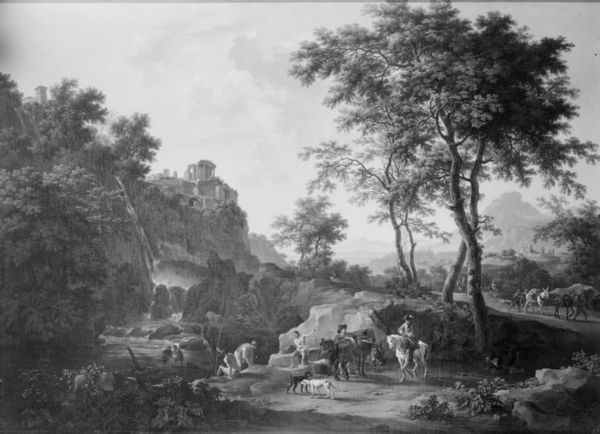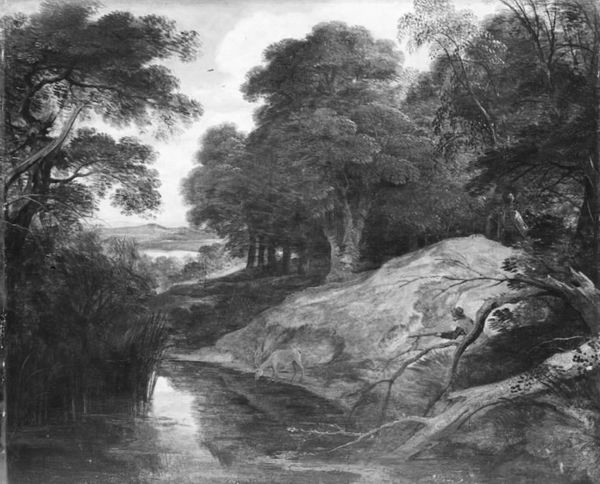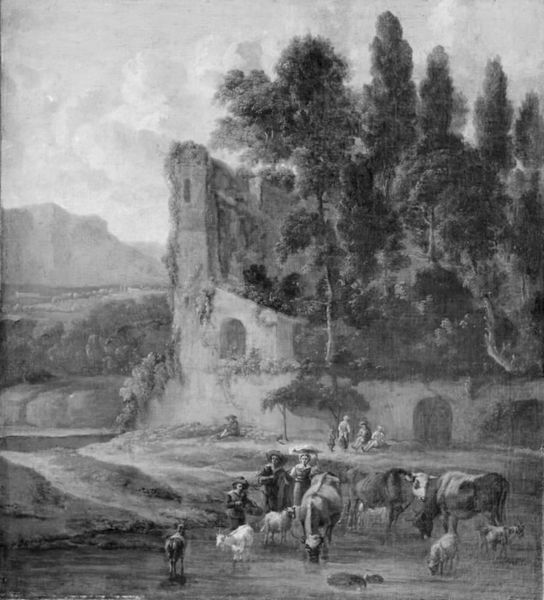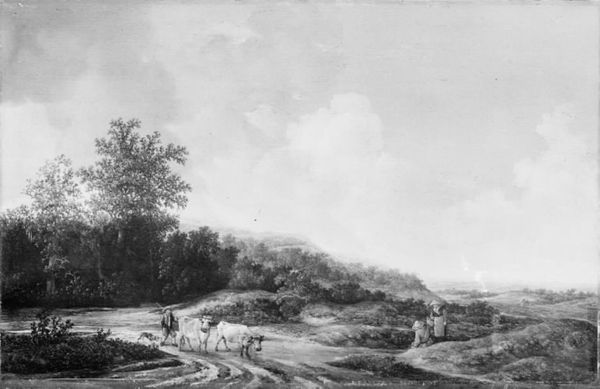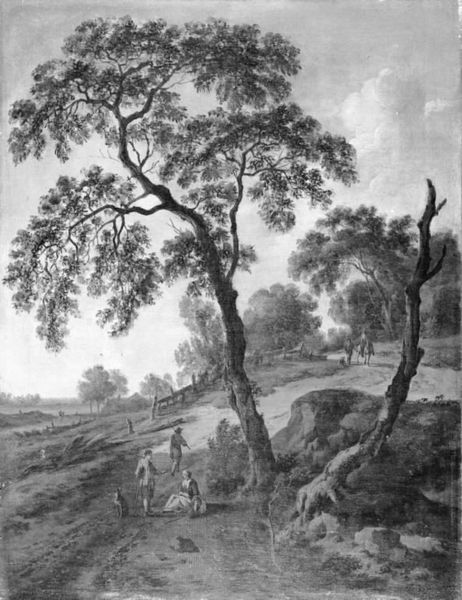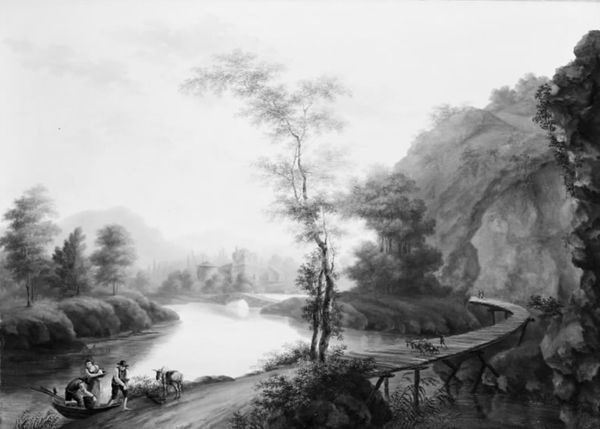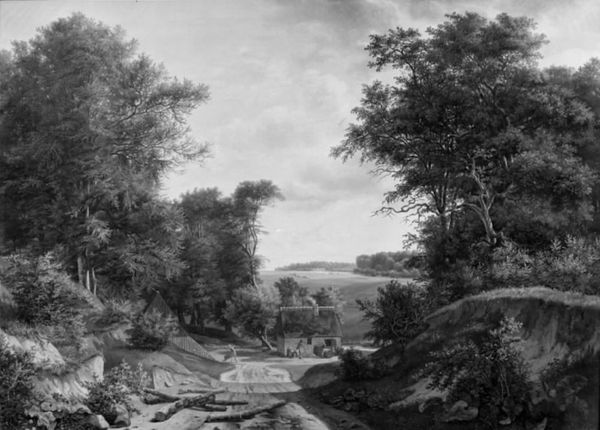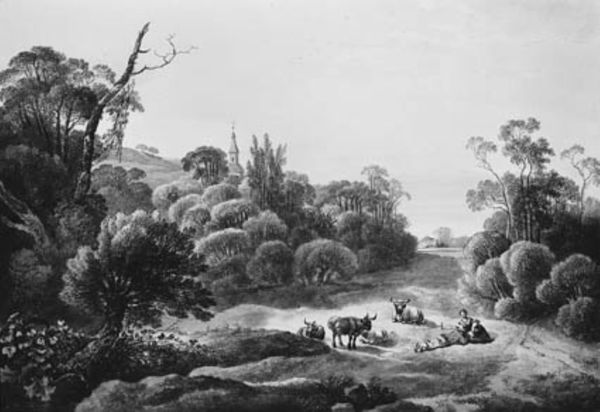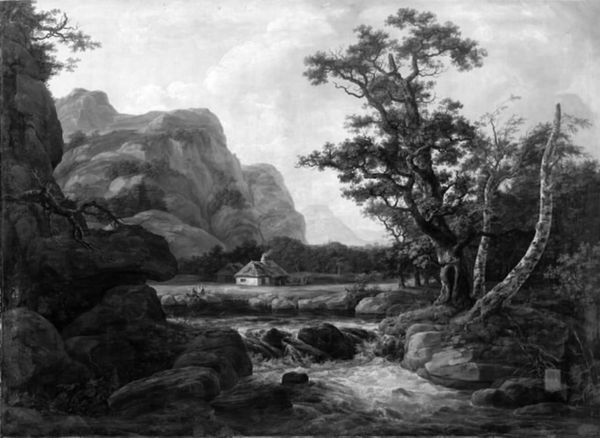
painting, oil-paint, canvas
#
baroque
#
painting
#
oil-paint
#
landscape
#
canvas
#
black and white
#
monochrome photography
#
monochrome
#
monochrome
Dimensions: 99.5 cm (height) x 98 cm (width) (Netto)
Curator: Ah, Jan Both's "Southern Landscape," believed to have been completed sometime between 1633 and 1652. A work now held in the collection of the SMK, the Statens Museum for Kunst. Editor: It's striking, isn't it? Even in monochrome reproduction, the compositional tension is palpable. The towering tree on the left versus the opening vista to the right—it's a fascinating visual dichotomy. Curator: Indeed. The placement of that dominating tree on the left really creates a stark visual frame. In its time, landscape painting was beginning to emerge as a vehicle for cultural and national expression, yet the "Southern" landscapes depicted by Dutch artists, often featured idealized and timeless scenes far from home. Editor: And it plays into that idea of the sublime, I think, that tension between the known and unknown. Those figures, the travellers and their animals in the center—almost dwarfed by the scale of the landscape. There is a semiotic complexity in how Both guides our eye: light filtering through the canvas that directs the audience through this journey that is literally embodied through the animal caravan in its material components—texture of the oils to the staging of light. Curator: Yes, note that the painting, rendered in oil on canvas, almost certainly depicts the Italian countryside, an exotic, sun-drenched locale for a Dutch audience. We see it reflecting an aspiration for beauty and serenity absent in much of the Dutch landscape. I wonder what those travellers see in the world before them? The weight of this cultural influence is immense on Both’s artistic hand! Editor: So the visual language really reflects social aspiration? I think about how notions of "landscape" are produced through these kinds of images. Its monochrome here, but imagine it full of the colours of Rome, ripe with possibility and that era's political imaginaries. Curator: Exactly. And perhaps to move away from only political or historical views on the canvas, we must not ignore Both's sophisticated formal control. His ability to orchestrate light and shadow, and in the construction of our gazes across pictorial space. Editor: I concur. It’s in those formal subtleties that this painting acquires enduring cultural relevance to this very day. We must ask ourselves what about its compositional forms draw us into such paintings, over and over again. Curator: Agreed. A painting of many complex visual structures, where so much remains to be studied! Editor: Indeed. A lot to consider.
Comments
No comments
Be the first to comment and join the conversation on the ultimate creative platform.
